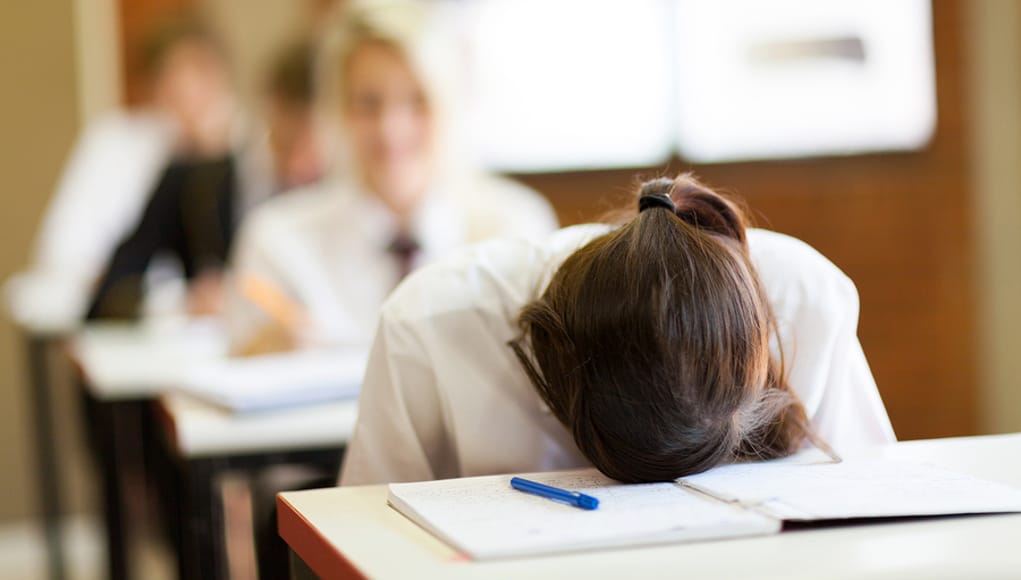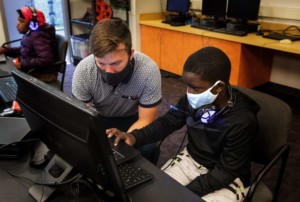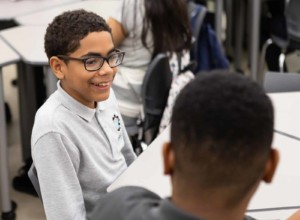Addressing the Hidden Effects of Trauma in a School Community

Cover Photo by Carlos Aguilar, and retrieved from InstantNewsBellaire.com
By Terry B. Grier, Ph.D.
Two weeks after Hurricane Harvey brutalized southeast Texas, as I write this, the internet is flooded with photos of cheerful youngsters and beaming teachers finally returning to their classrooms and to “normalcy,” according to the headlines.
Children are resilient, we so often hear, but while some sense of stability is being restored to Texas (and will be, as well, to Florida once the water recedes and damaged school buildings are repaired), “normalcy” is far deeper than mere routine and physical surroundings. True recovery from disaster and trauma in a school community involves re-establishing peace of mind — social and emotional well-being — both among youngsters and adults.
In Houston, the seventh-largest school system in the nation, and in dozens of suburban, rural and coastal school districts in Texas — and now in Florida and other Southern states — thousands of schoolchildren and educators have lost their homes and belongings and are living in shelters or motels. They are wearing borrowed or donated clothing, navigating unfamiliar routes on public transportation and school buses because of lost vehicles, and eating three meals a day at their campus. They have become disconnected from neighbors and friends and may have lost or had to give up beloved pets.
Simply returning to a classroom setting doesn’t eliminate the ruptures, the financial pressures, the soul-searing sense of displacement and loss.
Every year, educational communities face the challenges of these natural disasters and other traumas — as dramatic as school shootings, a teen suicide, a deadly bus crash, or as jarring as the unexpected death of a beloved teacher or custodian. Depending on school leadership’s response, these events can either galvanize a campus through compassion or create a “get over it” mentality where the tragedy is addressed then dismissed in a rush to that mythical “normalcy.”
The emotional impact of breathtakingly sudden upheaval demands immediate needs assessment and attention, such as counseling and carefully managed open discussions to share feelings and questions. But a second component is equally important and frequently overlooked — crafting a long-term strategy to recognize and treat post-traumatic stress. Several recent studies of schools impacted by natural disaster have shown profound long-lasting effects that manifest themselves in anxiety and depression, resulting in poor performance in the classroom. Left unaddressed and untreated, they will undoubtedly result in the same kind of deeply damaged, poorly functioning, tragic human beings that we have seen suffering from the effects of military PTSD.
After 30 years as a superintendent, the last seven at Houston ISD, I thought I was ready to retire. Yet of all the weighty and complicated issues of urban education that I left behind, one haunted me: The impact of stress on students, educators and support staff. I had come to recognize that stress cut across socioeconomic levels, ethnicity and age and that it was at the root of a broad spectrum of educational challenges ranging from poor student performance and behavior issues to teacher burnout and retention rates.
At HISD, we had found one remarkable stress reducer that had a ripple effect on those challenges when we implemented a yoga-based, health and well-being “mindfulness” program at 26 of our schools. We saw immediate and measurable improvements in how students studied and performed and a reduction in bullying and other behavioral issues. A collateral benefit was how educators and staff embraced the concept, not only training to instruct students but to incorporate the simple practices into their own lives.
Today I head Pure Edge, Inc., the renamed foundation that brings “success through focus” to a growing number of school systems across the U.S. We offer easily accessible programs using strategies based upon teaching management and control techniques for five principles of health and wellness: body, breath, mind, attention and engagement. Research partnerships with leading universities have already produced compelling evidence (for example, an almost 3% increase in student GPA by simply shifting from standard PE classes to yoga classes) of the effectiveness of our programs in helping individuals gain confidence and competence by feeling in control of their bodies and minds.
Educators need this type of powerful tool to help students who are dealing with the devastating effects of trauma, but they also need these tools to equip students everywhere with the social-emotional skills, self-awareness and other mindsets that will continue to increase in importance for success in the 21st century. As such, my vision is large: To make programs like ours a regular part of every school’s curriculum, in order to create individuals in each campus community who will be able to face whatever life throws at them with strength and focus to overcome, grow and endure.
For more, see:
- Creating a Mindful Classroom Environment
- Cultivating Mindfulness in the Classroom
- Is Meditation the Game-Changer Teachers Have Been Looking For?
Dr. Terry B. Grier is the Executive Director of Pure Edge, Inc. Connect with them on Twitter: @pureedgeinc
Stay in-the-know with all things EdTech and innovations in learning by signing up to receive the weekly Smart Update.






0 Comments
Leave a Comment
Your email address will not be published. All fields are required.